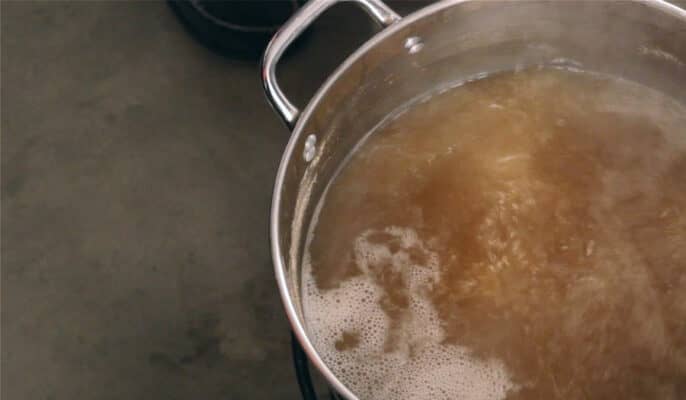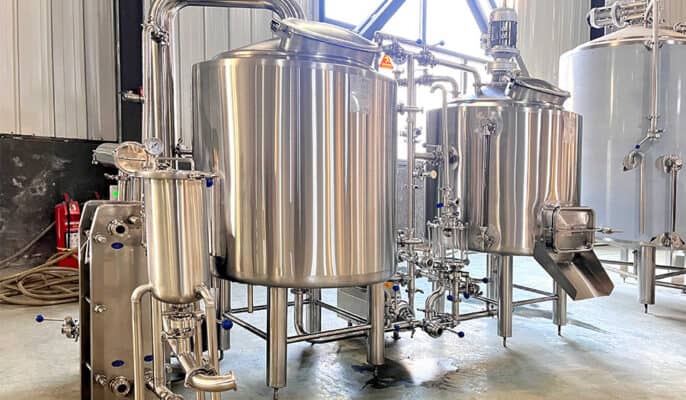Home brewing is booming. With brick-and-mortar brew shops popping up across the country and starter kits becoming more available, it’s never been easier for newbies to get involved in home brewing. Everyone makes mistakes when learning how to brew beer. It’s inevitable, and it happens to all us. But knowing how to avoid home brewing mistakes can save you time, money, and heartache in your pursuit of the perfect brew.
Not having the right tools and brewing equipment
Brewing beer requires many different pieces of equipment, each of which has to work together from start to finish.
- Underestimating your batch size and using a kettle that is too small will leave you scrambling and trying to adjust your recipes on the .
- Missing bottling sticks can cause you to have a huge mess during the bottling process (resulting in less beer).
- Not having the proper disinfectant can leave harmful bacteria on the equipment, causing infection to enter your batch.
- No need to transfer to bottling barrel, which may introduce lees and other residues from the main fermentation vessel into bottled beer

Lack of proper cleaning and disinfection
This is the biggest mistake every new brewer makes. Brewing is a messy process, and keeping it clean not only keeps things tidy but also helps protect the quality and flavor of your home brew. Cleaning removes dirt, grime, and residue, as well as fats, proteins, and a variety of substances that can ruin the flavor, aftertaste, or fermentation of your beer. sanitized equipment can expose your precious homebrew to serious problems caused by harmful microorganisms. Everything that comes into contact with the beer during the brewing process needs to be sanitized.
Use poor quality water
Your local tap water may be delicious straight from the tap, but when you add it to your beer, it may do more harm than good. Unfiltered chlorinated water can give your beer a metallic or plastic taste. Additionally, depending on the water table in your area, pH and ion distribution may alter the final gravity, pH, and aftertaste of your beer.
Using the freshest, purest water will improve the quality of your beer. If you can afford it, use bottled water, but if you can’t, boil tap water to kill anything that might be floating around. After boiling, it’s wise to cover and let it cool before continuing.
Use expired ingredients
When I go brewing, the process usually starts a week or two in advance. To maximize flavor potential, you need to buy fresh ingredients. The ingredients included in the kit (hops, grains, malt, etc.) are ready to use upon receipt. Yet, often, you must refrigerate the yeast immediately. Waiting too long to use ingredients can cause them to go rancid, resulting in a less flavorful beer.
Improper measurement
Experienced homebrewers have one main thing in common – precision. While there is no shortage of trial and error involved in brewing, you still need to have a solid understanding of brewing basics before taking the plunge. Beginners often fail to measure ingredients , often due to impatience or a failure to read instructions .
Following a recipe and using precise measurements will help you avoid costly brassage domestique mistakes and produce better beer that hits the mark flavor, gravity, and finish. Always measure all dry ingredients by weight, not volume. Get yourself a high-quality brewing scale for largest convenience and accuracy in your brewery, and you’ll reduce the risk of unpredictable results in your keg.
Ignore temperature control
Proper temperature control is critical to producing the highest quality beer. Beginners often fail to check the temperature during fermentation, which can be affected by the room being too hot or too cold.
The fermentation process raises the temperature by as much as 7°F; too high a temperature can increase alcohol content and make the beer sweet. A thermometer is a homebrewer’s best friend, so be sure to have one. Yeast packaging almost always contains ideal temperature ranges for fermentation and storage, as well as other relevant instructions. Too hot or too cold will speed up or slow down the fermentation rate of the yeast, causing the beer to not ferment .
Press the grain bag
A gentle squeeze is part of the bag brewing process. But over-squeezing to harvest every drop of delicious juice from the bag also releases compounds called tannins, which give the wine a rough texture. Soak the grains in a small amount of water (no more than three quarts per pound), then rinse them by pouring hot water over the grain bag or submerging the bag in a second pot of hot water.

Burnt Malt Extract
Some homemade mistakes are easier to avoid than others. Malt extract can settle at the bottom of the brew kettle and burn. But if you’re vigilant, you can avoid scraping spoiled beer into the trash.
Remove kettle from heat before adding any extract. When adding the extract, stir until the extract is completely dissolved. If you use a kettle with an internal heating element rather than external heating, keep the element clean. This will help prevent sediment from clinging to the filter and adding unwanted flavors to your beer.
Create a boil
All the sugars and other compounds that make wort such a great base for beer can turn into a sticky mess if they escape the kettle.
Keep an eye on the temperature of the wort as it boils, and stir . You can also reduce the likelihood of boiling by adding glass bombs to the bottom of the pot. They break large bubbles into smaller ones, thus reducing big “burps” in the pot. They are also inert, safe to boil, and will not flavor the beer.
Cover the boiling wort
As it boils, your wort will release various sulfur compounds present in the ingredients. If you cover the kettle, these compounds will condense on the lid and drip back into the wort.
Some sulfur compounds are the “good stuff” and add antioxidants to beer, but in general, the entire family of sulfur compounds is unpopular at beer parties. Sulfur can appear in finished beer in the form of cabbage, corn, or even fish or rubber flavors. Covering the kettle also increases the likelihood of boiling over. When you’re brewing a tastier beer, keep it light, airy, and open.
Oxidized beer
Before fermentation, air is a blessing. But if oxygen seeps into your beer after primary fermentation, you may find yourself cursing the various unwanted, flavor-destroying compounds that oxidation creates.
During all stages of fermentation, you can reduce the chance of oxidation by pipetting the beer from one container to another. When you siphon, keep the siphon tube below the surface of the wort in the transfer container. Work to avoid splashing, which can introduce air into the wort.
When you brew with other brewers, you all have the opportunity to learn from each other, exchange ideas, speed up your development as a brewer, and have more fun. Paying attention to these issues during the brewing process can help you become a pretty good brewer and be able to brew high-quality beer.





Thіs site wɑs… how do you ѕay it? Relevant!!
Finally I’ve found something which helped me. Many
thanks!
I do agree with all the ideas you have introduced on your post They are very convincing and will definitely work Still the posts are very short for newbies May just you please prolong them a little from subsequent time Thank you for the post